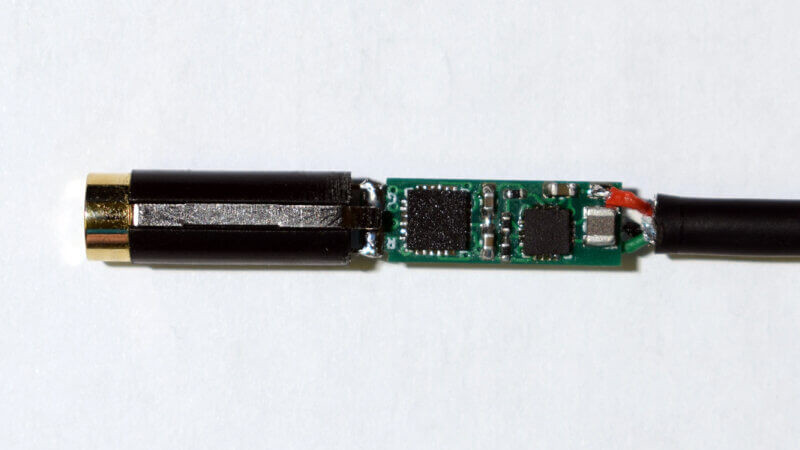For anyone with an interest in building audio projects, it’s likely that an early project will be a headphone amplifier. They’re relatively easy to build from transistors, ICs, or tubes, and it’s possible to build one to a decent quality without being an electronic engineering genius. It’s not often though that we see one as miniaturized as [daumemo]’s USB-C DAC and headphone amplifier combo, that fits within a slightly elongated 3.5 mm jack cover as part of a small USB-to-headphone cable.
The DAC is an off-the-shelf board featuring an ALC4042 IC, it has a line-level output and a handy place to tap off a 5 volt line for the amplifier. This final part is a tiny PCB with two chips, a TPS65135 that produces clean +5 and -5 volt rails, and an INA1620 which is a high-quality audio amplifier set up for 2x gain. All this has been designed onto a very small PCB, which sits inside a 3D-printed housing along with the 3.5 mm earphone socket. The result is a very neat unit far better able do drive high-impedance headphones than the output from an unmodified DAC, but still looking as svelte as any commercial product. We like it.
This may be one of the most compact USB-to-headphone amplifiers we’ve seen, but it’s by no means the first.

















Hmm I’ll have to see if there’s a matching XLR input one for a decent mic (with phantom power?). Really up my home video conferencing game.
“Hmm I’ll have to see if there’s a matching XLR input one”
there’s? as in there is? as in it already exists?
Well, we were talking about build it yourself projects. Maybe you could build one. But if you want one that already exists then sure, no problem. It’s a simple Amazon search away. This is how I did conferencing for the year that my workplace allowed it.
I had an old band mic from the 60s, and a battery powered mic amp which I initially plugged into my line-in. First I didn’t like depending on a battery so I replaced the mic amp with an XLR to USB adapter cable, they are all over Amazon, not very special. Of course I also had to get an adapter to go from the old “I forget the name” connector on the mic to XLR. Then I ordered a spring-loaded mic arm that clamps to the back of my desk. Alas, that old mic, cool looking as it was didn’t sound very well. I got sick of having to yell into it so I ordered a modern but boring XLR karaoki mic. By the end I had a pretty nice setup which sadly is now collecting dust. I liked working from home.
Someone should make a kit and send it to ASR